Abstract
This is a summary of the research paper on how to develop a cycling culture and build an Olympic champion in the UAE: Investigations include:
- The approaches to spread the cycling culture.
- How to use the following to spread the culture:
- Planning;
- Communication;
- Legal representation;
- Strategic planning.
- Determine stakeholder roles.
- Use of different models.
- Sample size 103.
- Target population students from schools and universities.
- Research design correlational.
- Research method: Qualitative and quantitative paradigms.
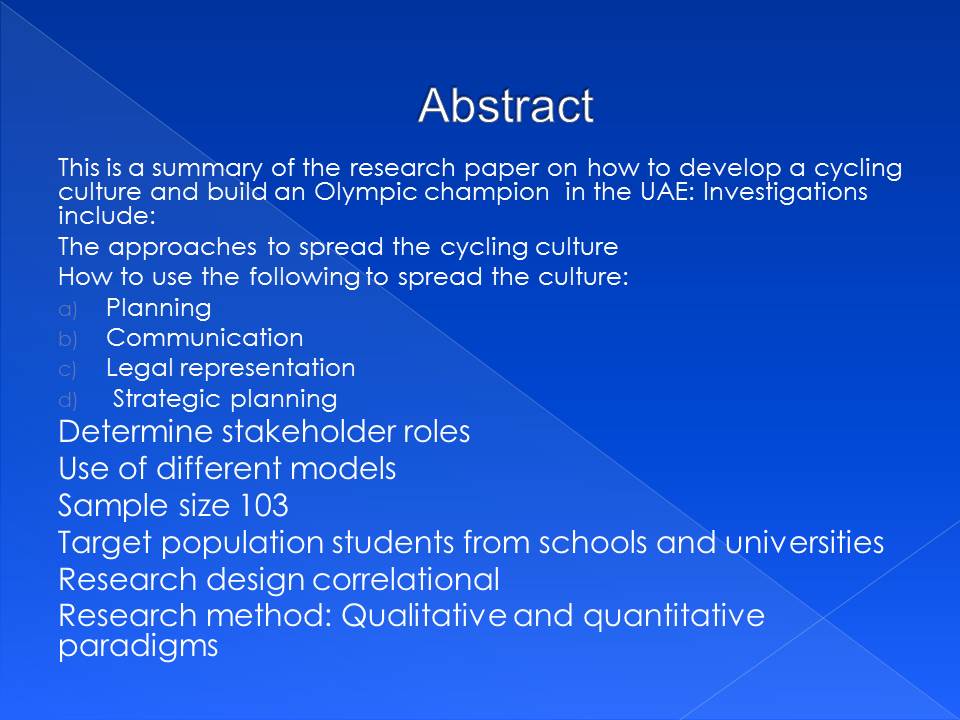
Introduction
The cycling culture was at its lowest among students and members of the public in the UAE (Alrawadieh & Johnson, 2012).
Challenges:
- Lack of training programs (Lentillon‐Kaestner, 2013).
- Strategies to spread the cycling culture among schools and universities.
- Educating the society to accept the cycling culture by encouraging them to join the training program (Aldred, 2010).
- Building excellence clubs to manage the cycling games.
- Amalgamating the critical success factors (sports law, sports management strategies, communication, marketing).
- Student cycling posture.
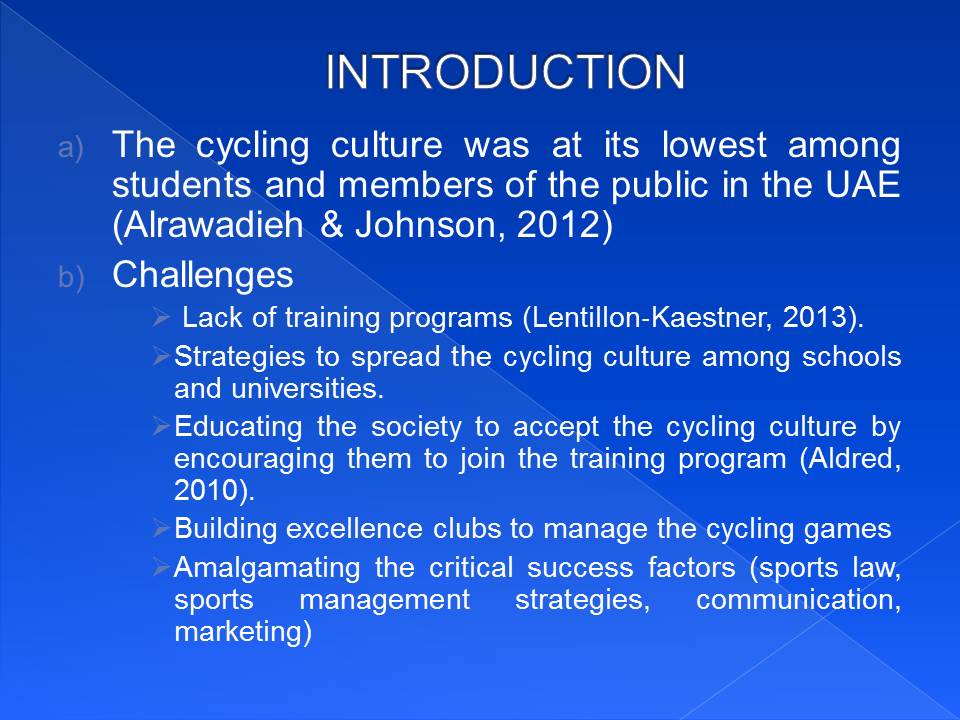
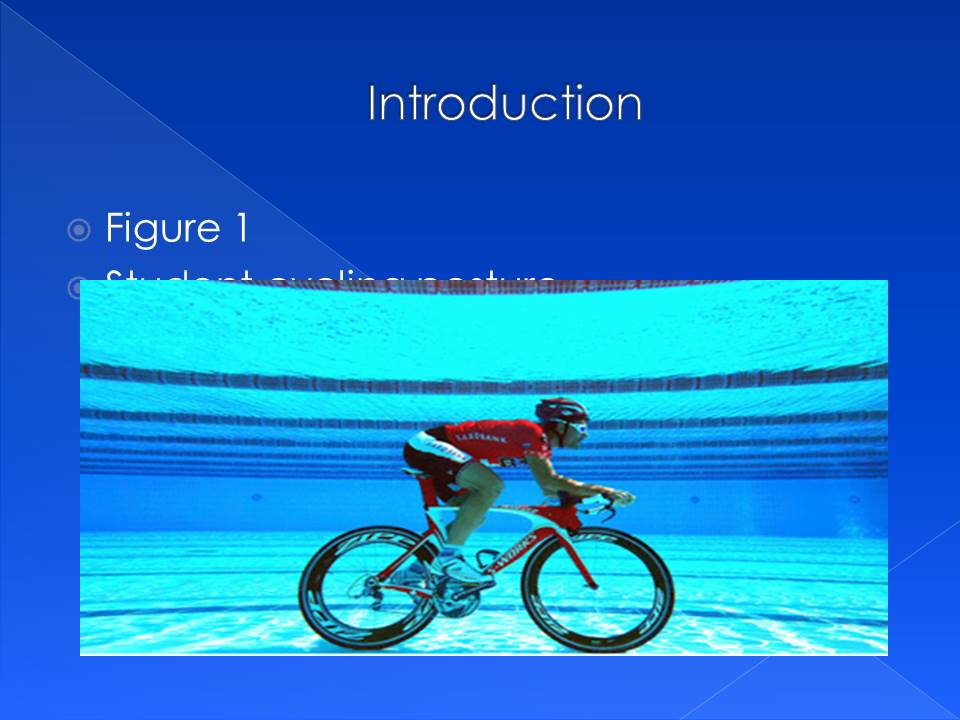
Developing a Cycling Culture
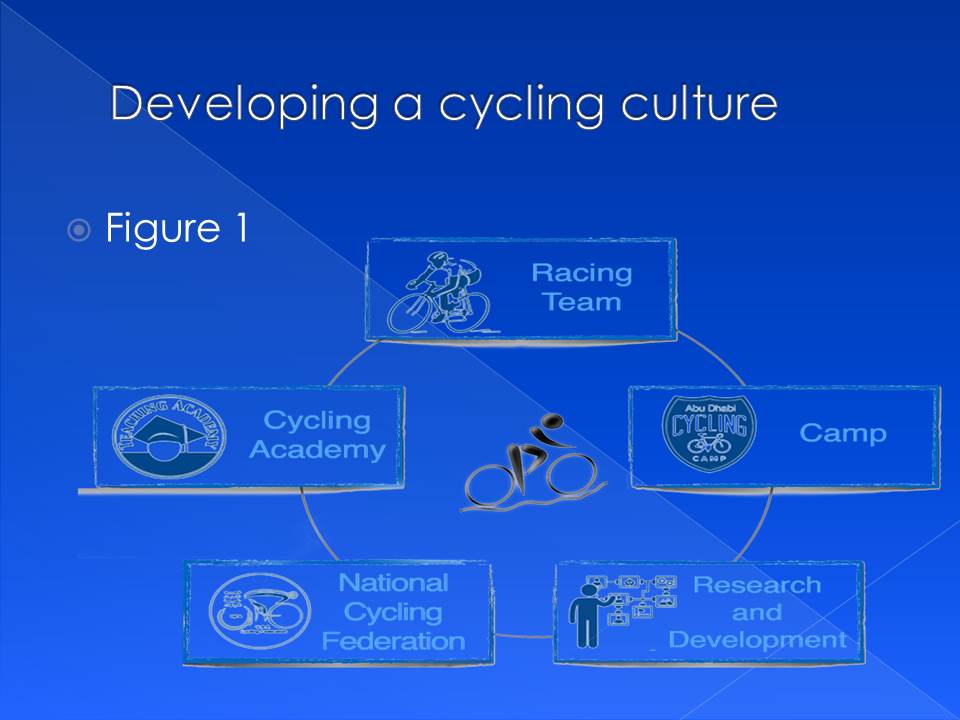
Statement of the Problem
Building a cycling Olympic champion in the United Arab Emirates is an important problem because cycling does not attract many students from the schools, universities, and the society in the UAE leading to a very low turnout (Wexler, 2012). Here, the problem has been caused by lack of a cycling culture among the students in UAE’s learning institutions and among the cycling fans. To solve the cycling culture problem among students and the society, a study was conducted based on the following objectives:
Objectives
- To spread the cycling culture within the schools, universities, and the society.
- To build an excellence clubs and a federation to manage cycling events.
- To develop an Olympic Champion.
Significance of the Study
The study will provide a solid background for students and fans on how to build the cycling culture to develop Olympic champions in the UAE.
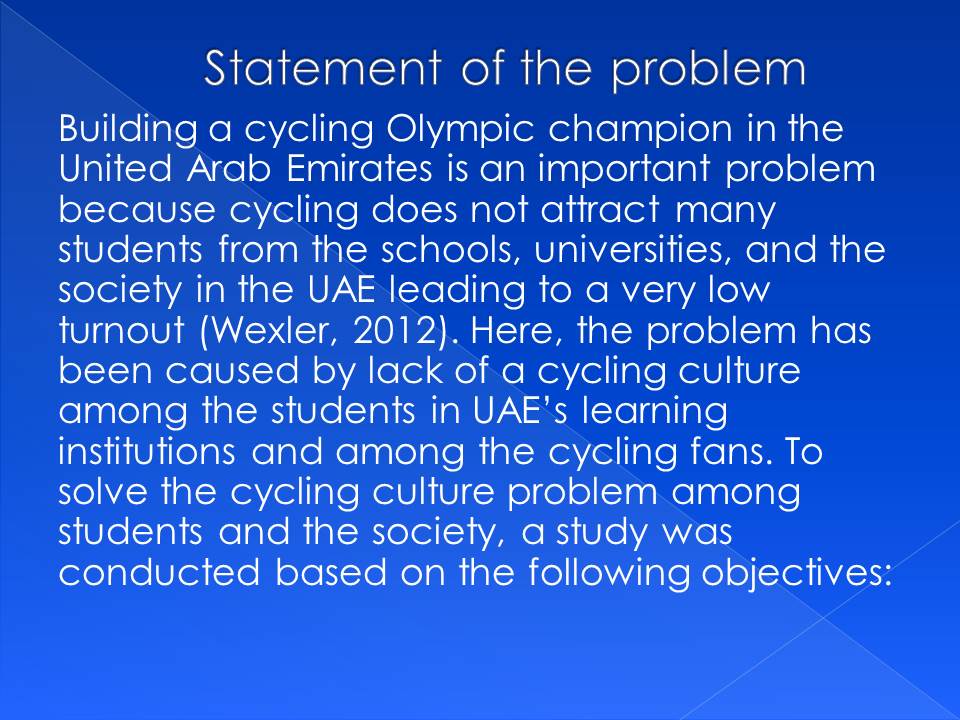

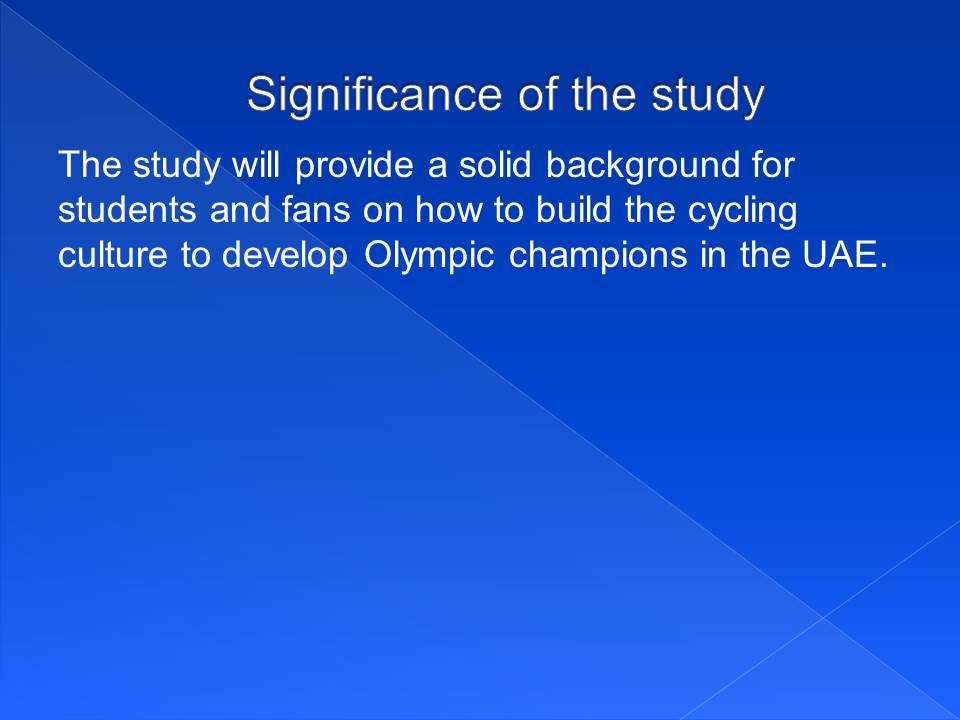
Literature Review
Bicycle Culture
Spreading the cycling culture among schools, universities, and the society by:
- Holding cycling training courses in schools and universities (Horton & Parkin, 2012).
- Establishing cycling routes (Bromber & Krawietz, 2013; Sulayem).
- Using events to promote cycling among the community members (Alsharekh & Springborg, 2012; Aldred, 2010).
- Providing facilities such as showers for participants to use once a cycling event is over.
- Promoting the use of appropriate cycling gear.
Use campaigns such as leaflets to promote the cycling events and culture (Attride-Stirling, 2001; Burke, 2003; Steele, 2012; Skinner & Rosen, 2007).
Setting up group cycling events to promote the cycling culture (Bromber & Krawietz, 2013).
Encourage community participation (Berg, Lune & Lune, 2004; Bonham & Koth, 2010).
Encourage students’ participation and sharing culture.
Bicycle culture – Encourage practice, maximum intensity cycling, encourage change of social behavior (Xing, Handy, & Mokhtarian, 2010; Buttner, Cruz, Stetzenbach, Klima-Comba, Stevens & Cronin, 2004).
Practical Sessions
Students on a practical cycling session to gain the necessary cycling skills such as:
- The high degree of endurance;
- How to apply their strengths.
Corporate Social Responsibility
- Community participation in cycling events.
- Spread the cycling culture among the community.
- Encouraging.
- People from.
- The society.
- To participate.
Cycling Events
- A cycling event involving many participants from different schools and the society.
- Successful participants will be selected from the pool of participants.
Gearing Up to Participate in the Cycling Event
- Planning and getting prepared to participate in the cycling event.
- Dressing for the event.
Implement maximum-intensity cycling that lasts for 10 to 500 minutes (Rissel, New, Wen, Merom, Bauman & Garrard, 2010; Rein & Shields, 2007).
Increase performance by improving lactate threshold, cycling economy, and the maximal oxygen consumption (Nohr, 2009; Melnyk, Cooper, & Hartley, 2011; Peveler, 2008; Campbell, 2011).
Use maximal training to increase the cycling economy of the trainees (Horton & Parkin, 2012).
Create clubs and employ trainers (Xing, Handy & Mokhtarian, 2010).
Use of the cycling training curriculum to train cyclists (Heijmans & Mallon, 2011; Alrawadieh & Johnson, 2012; Aldred & Jungnickel, 2014; Hill, Jones & Schilling, 2014; Hogan & Fisherkeller, 1996; Horton & Parkin, 2012; Kitano, Radu, Shaaban & Flake, 2000).
Encourage endurance(Yeoman, 2004).
90% of the tasks dependent on the aerobic metabolism of the body.
Cycling Gear
The gear includes a bicycle, and attire that participants have to be aware of to purchase.
Training
Figure 7.
Developing an Olympic Champion
- Use the Olympic Podium Program to establishing performance based cycling teams (Mangan,1992).
- Develop positive personalities among participants to make them resilient(Lentillon‐Kaestner, 2013).
- Increasing self-awareness.
- Maintaining focus when undergoing training (Lian, Zhu, Xiang, Li, Yang & Wang, 2010).
Training institutions
- Demonstrates a cyclist practicing;
- Guidance in class on how to cycle;
- Lessons taught in various schools and cycling clubs.
Building federations and excellence clubs to manage competition:
- Strategic planning-Systematically implement the cycling culture, involve stakeholders, and use of excellence models (O’Connor & Hassan, 2013).
- A communication plan encourages free communication and the sharing of ideas among cyclists (Fullagar & Pavlidis, 2012; Furness, 2010; Hassall, 2012).
- Internal organization- Conduct a PESTEL analysis.
- Legal representation- Educate cyclists on the need for legal representation (Coakley & Pike, 2009; Coombs, 2014; Evans & Lindsay, 2012).
- Financial planning- Identify direct and indirect costs and start programs to raise funds.
- Create standard training programs.
- Train leaders to organize, train, and create agreements among teams and other participants (Emeis, Mara, Schlarbaum, Möbius, Dähnke, Struck & Krom, 2010).
- Increase the number of events to improve performance (Amara, 2010; Amaize, Mady & Benson, 2011).
Train teams on:
- Stamina;
- Speed;
- Strength;
- Sustenance;
- Psychology;
- Suppleness;
- Structure;
- Skills.
Cycling speed
Shows the maximum characteristics of cycling speed to be efficient and energy consumption is 50% and cycling efficiency to:
- Be 70%;
- At 40 km/hr.
Culture
- Define the cycling culture and increase motivation (Pucher, Thorwaldson, Buehler, R., & Klein, 2010).
- Define a vision statement that provides direction and hope for the participants.
- Learning from Olympic champions models.
- Align the core values with the cycling culture.
- Associate cycling culture with successful people (Bowdin, O’Toole, Allen, Harris & McDonnell, 2006; Bryan, Grandgirard & Ward, 2010; Davis, 2012).
- Encourage participants to practice regularly.
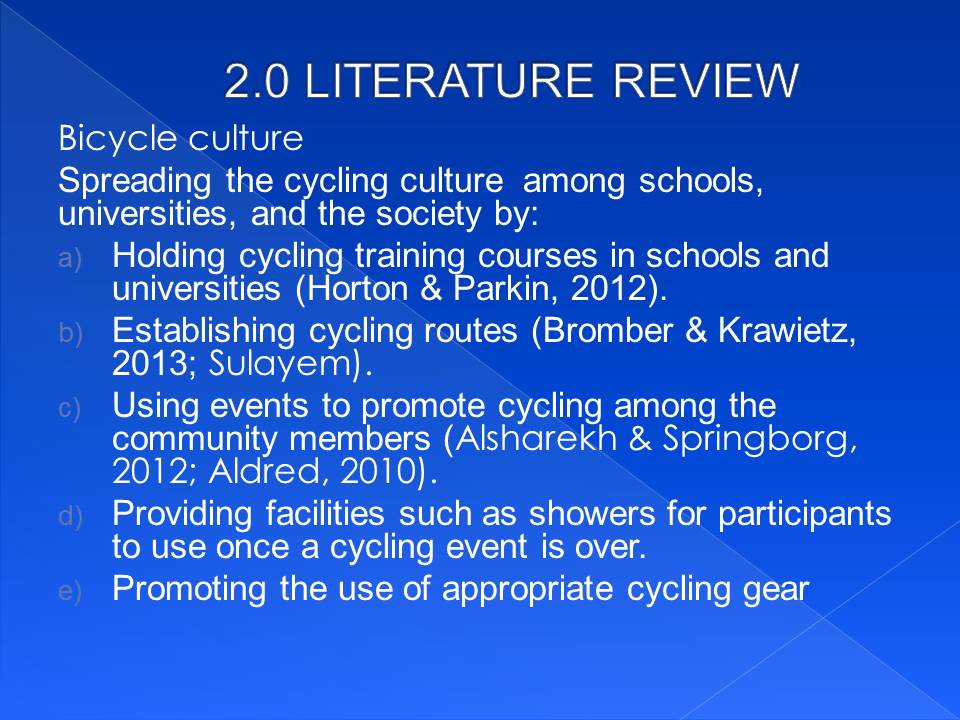
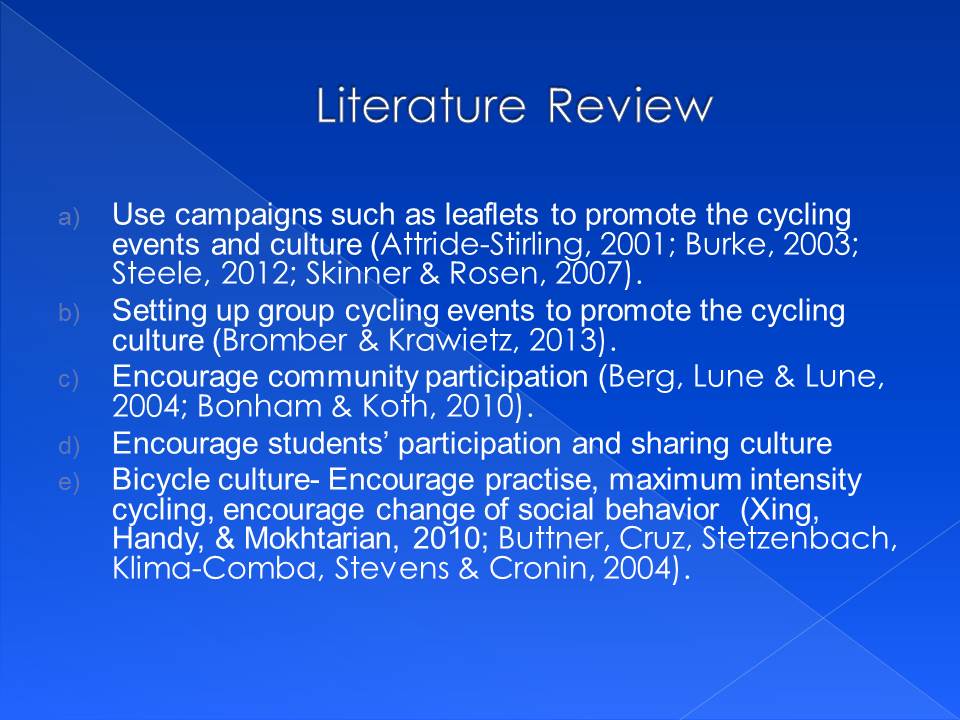
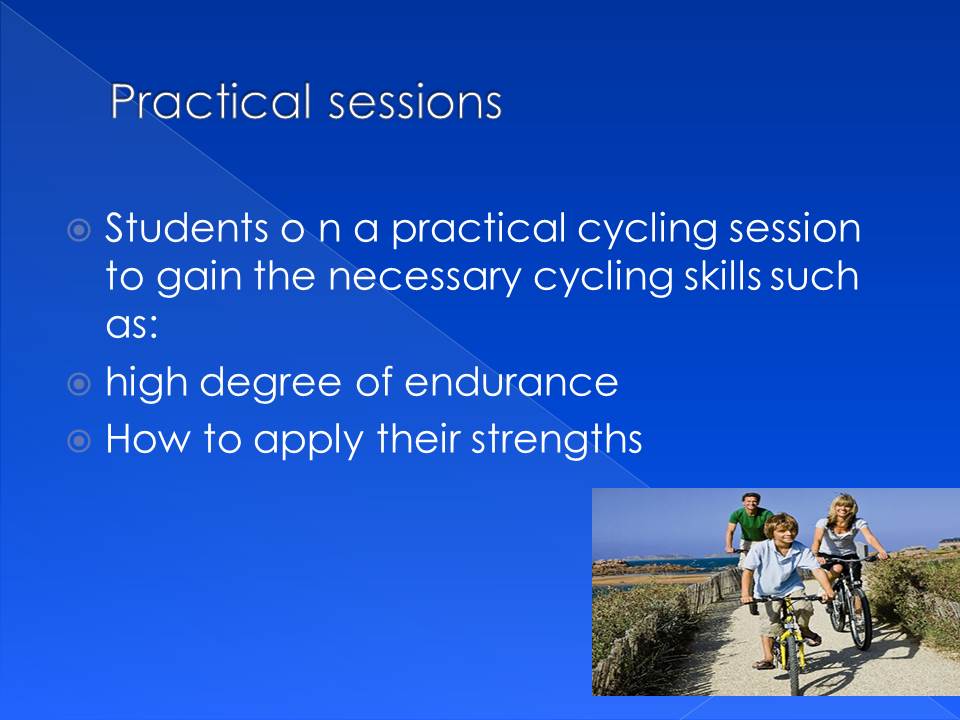
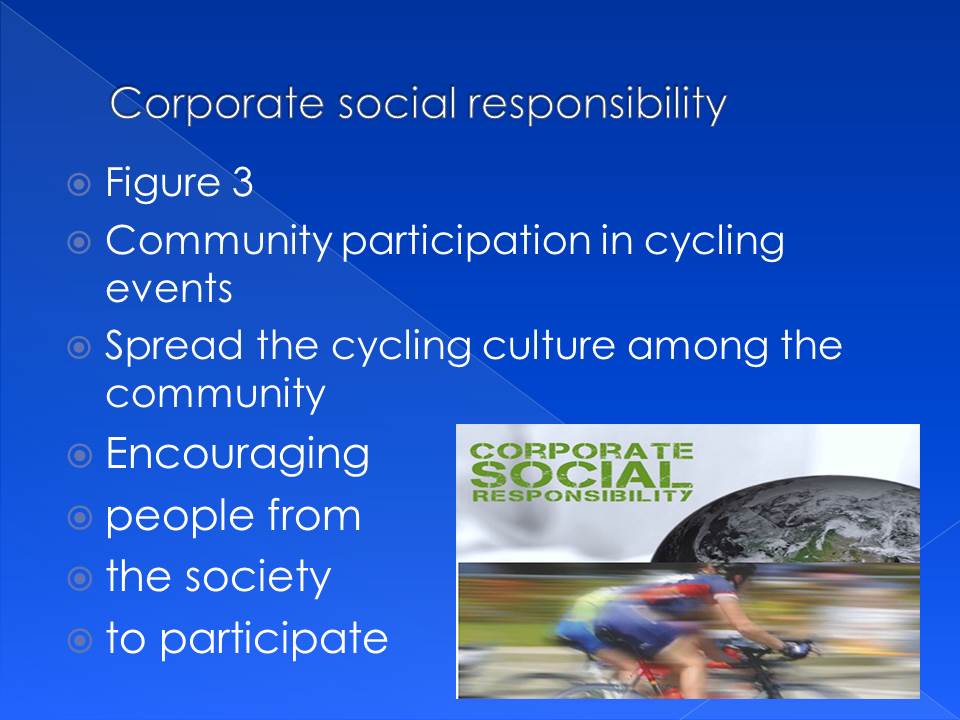
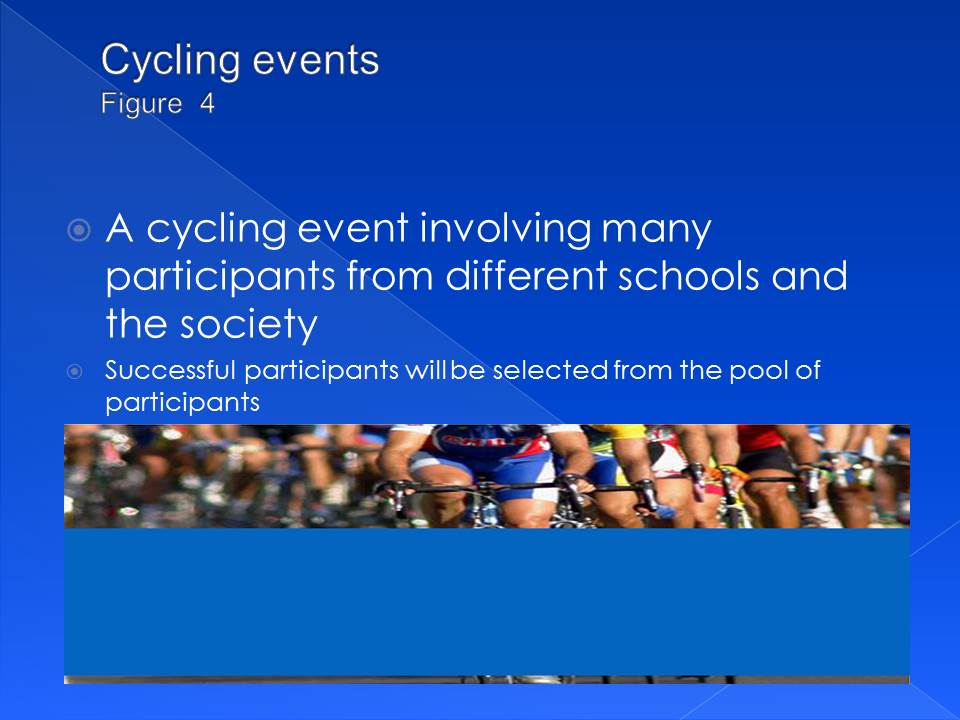
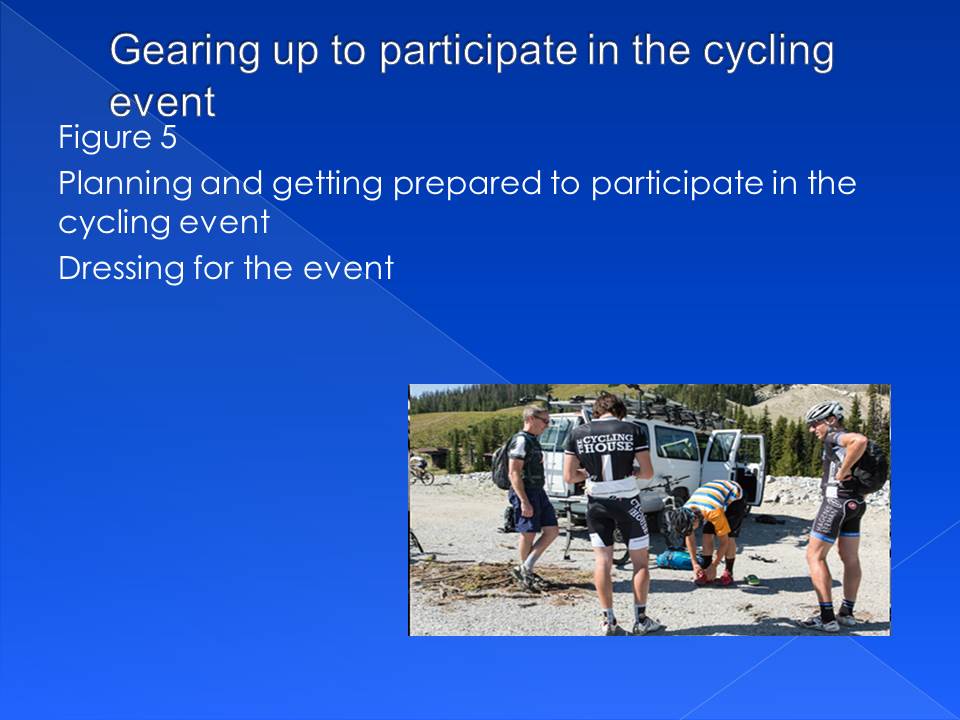

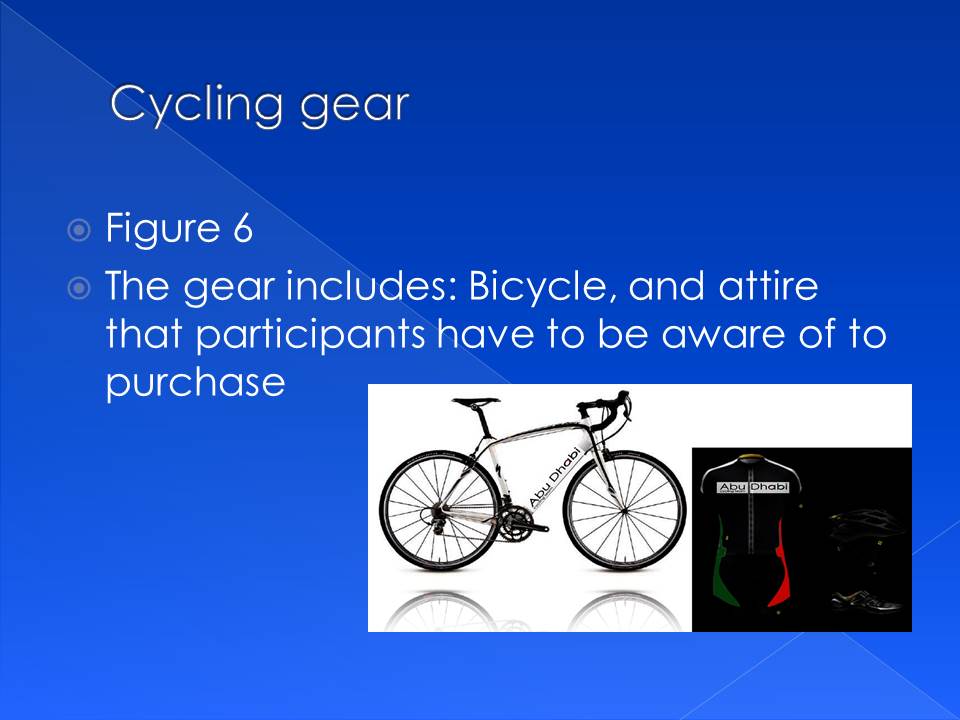
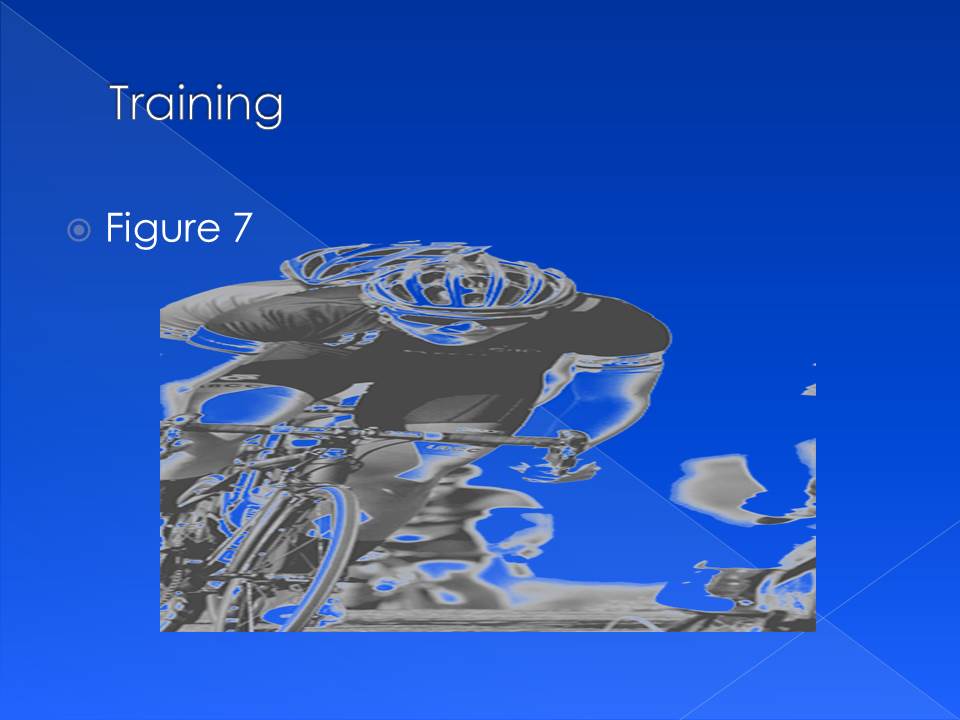
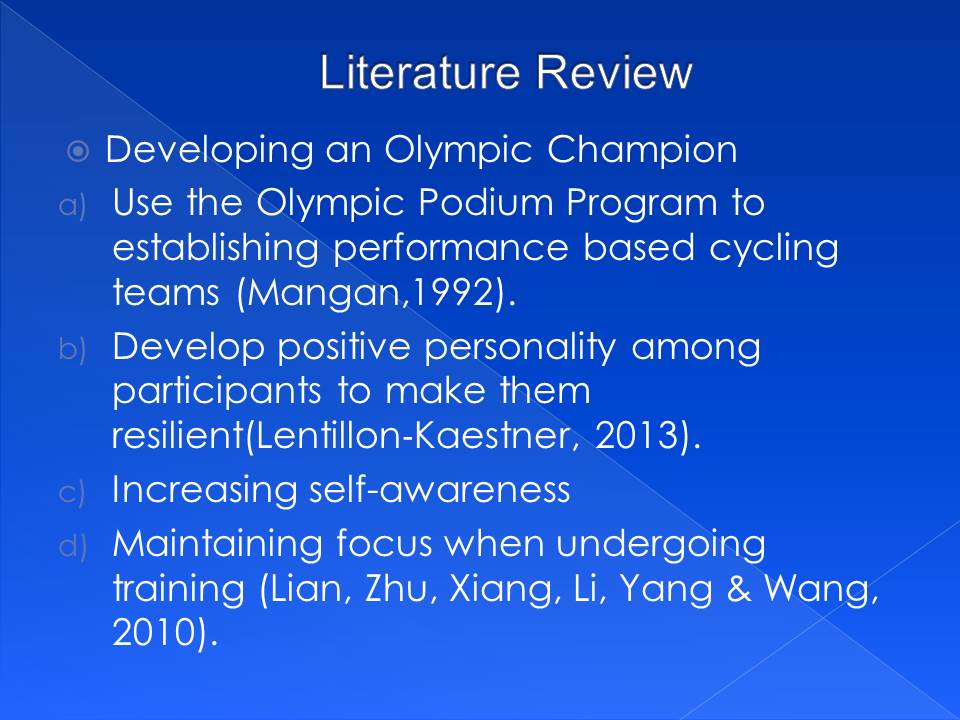
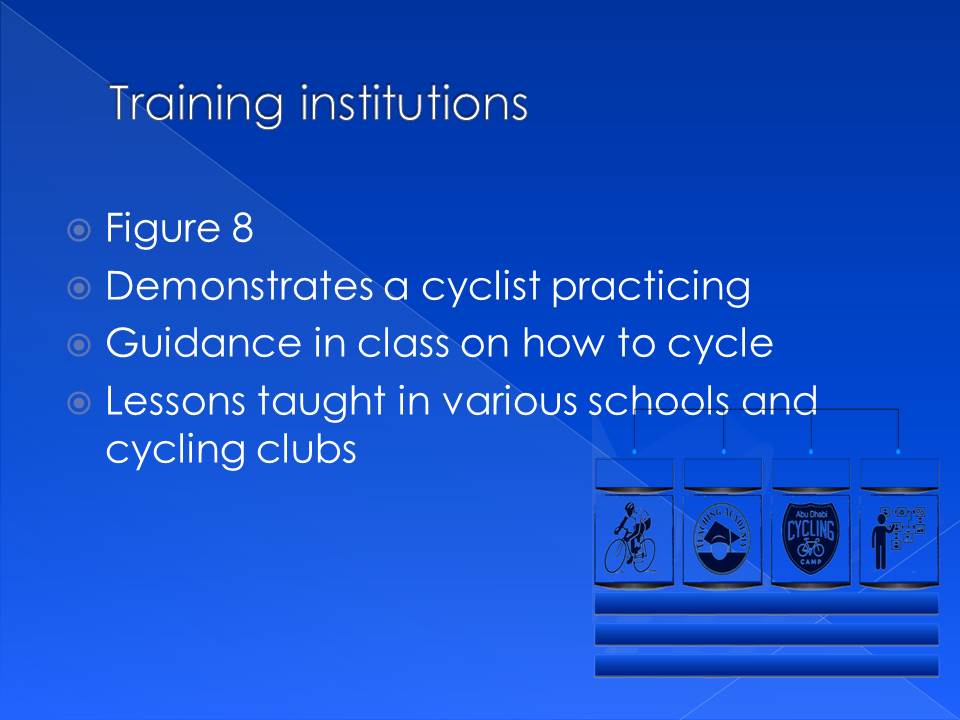
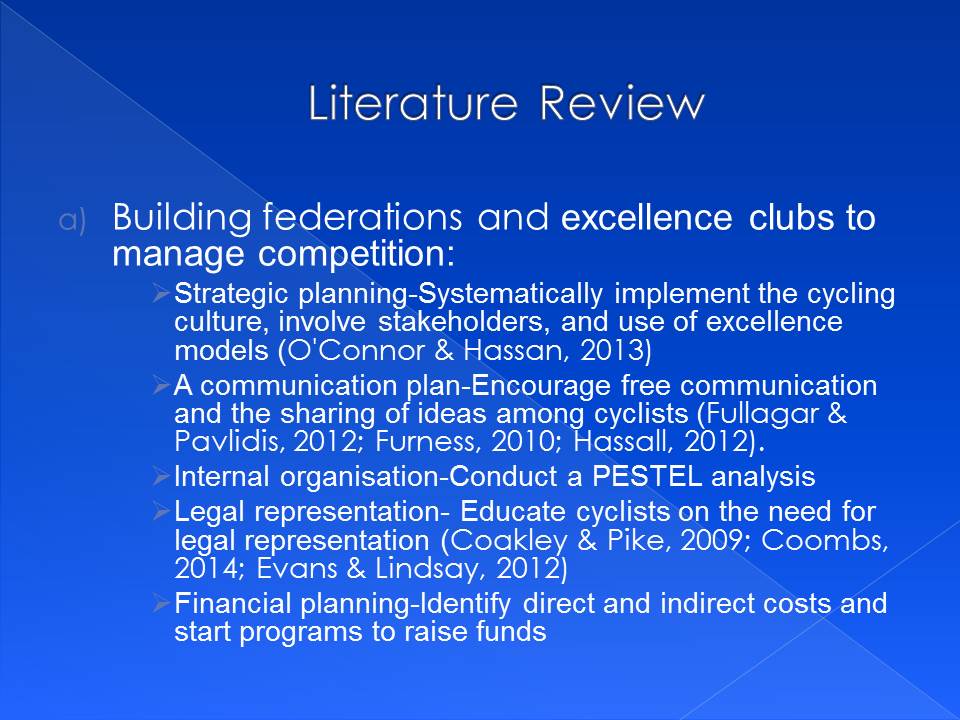

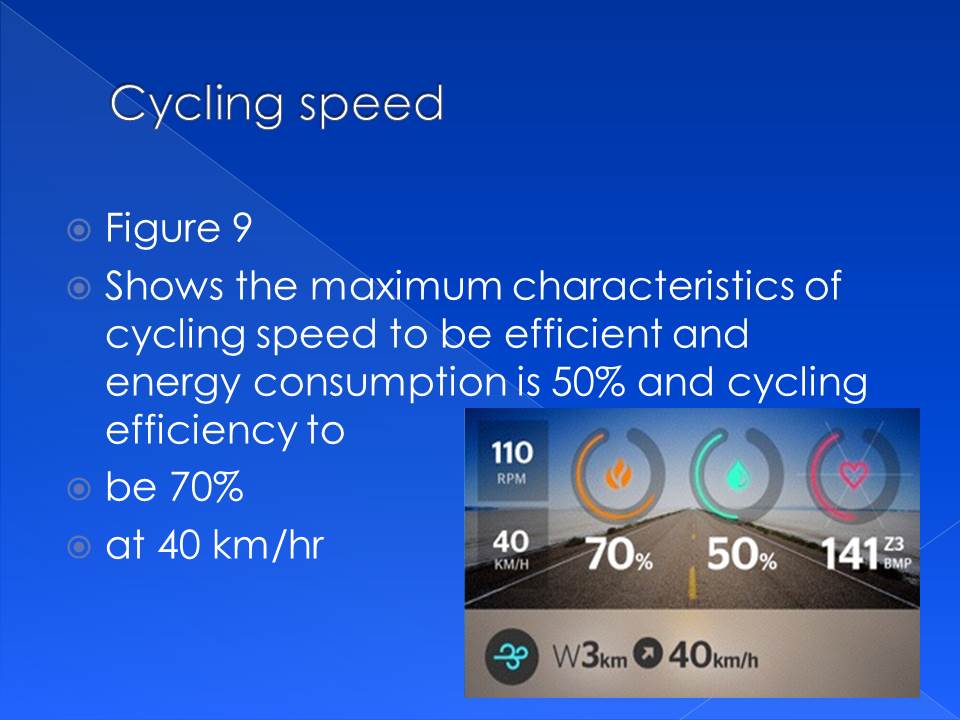
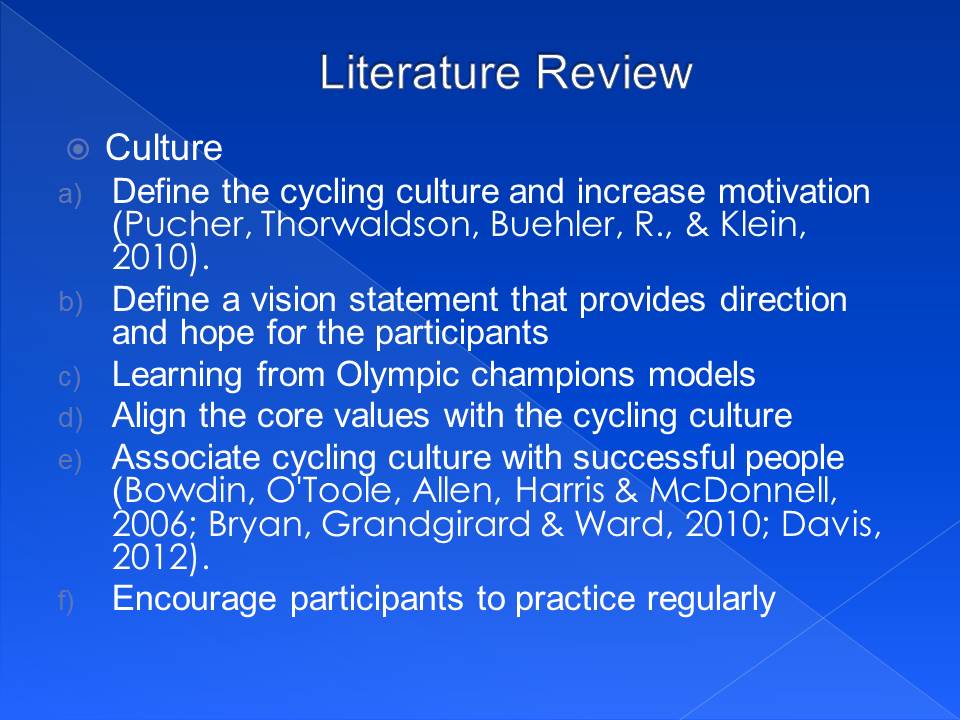
Methodology
Qualitative and Quantitative Paradigms
Qualitative – Systematic review of literature on cycling culture:
- Conducting an in-depth study of the cycling culture;
- Explore the theories used to explain the cycling culture;
- Address complex issues;
- Provides a holistic view of the cycling culture.
Quantitative – Analysis of empirical data collected using questionnaires.
Population and Sample Size – University, high school, and college students, and fans.
Sampling Strategy – Probabilistic sampling strategy.

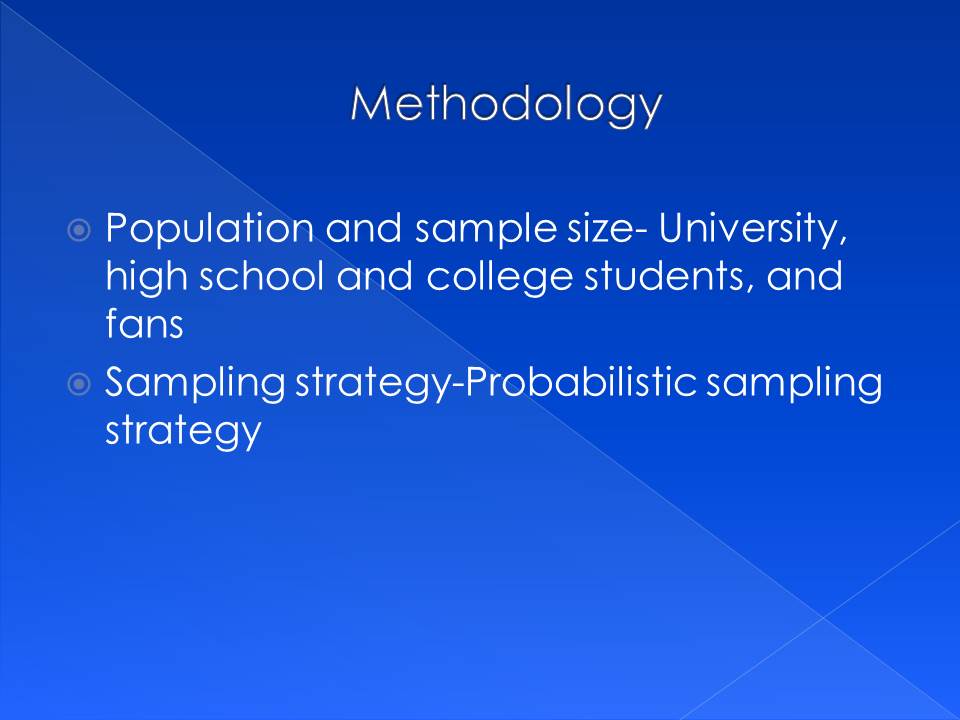
Findings and Analysis
Sample size-310 participants.
Represented by male and female participants from universities, schools, and the community.
Spreading the Culture
89.7% Strongly agree that success depends on spreading the cycling culture among schools, colleges, and universities.
Planning
- 55.4% agree on establishing a plan;
- 7.9% neither agree nor disagree;
- Supervision of all activities occurs;
- Steering committee put in place;
- Internal security;
- Put in place.
Communication
70.6% strongly agree with the need for a communication plan and 15% agree with the need for the plan:
- Local community part of the organizing committee;
- Showing corporate social responsibility;
- Sponsorship programs evaluated;
- Logistics identified.
Internal Organization
- 69.5% strong agree with establishing internal organisation;
- 13.9% agree;
- Some students were less conversant with the need for internal organisation;
- Internal organisation allows for preparation of internal security;
- Communication centers established;
- Command and controls established;
- Public address systems put up.
Legal Representation
- 20.7% strongly agree with legal representation;
- 31.7% agree with the need for legal representation;
- Legal representation involving the right legal team established.
Financial Planning
- 37.9% strongly agree with the need for a financial plan;
- 27.2% agree;
- Financial auditing necessary;
- Market surveys necessary;
- Budget analysis necessary to plan for an event.
Building an Olympic Champion
63 % strongly agree.
Based on the capacity to:
- Train students;
- Train participants;
- Attract sponsors.
Building Culture
91.2% agree with building the culture involves:
- Interaction with media;
- Incorporating people with different values and beliefs;
- Encouraging fair play.
Building an Olympic champion
- 37.9% strongly agree with the need for resilience;
- 27.2 % agree on athlete and participant development 16.2% agree on competitive cycling techniques;
- 14.9% agree on building the cycling culture.
Factors to consider:
- Resilience;
- Participation;
- Competitive cycling.
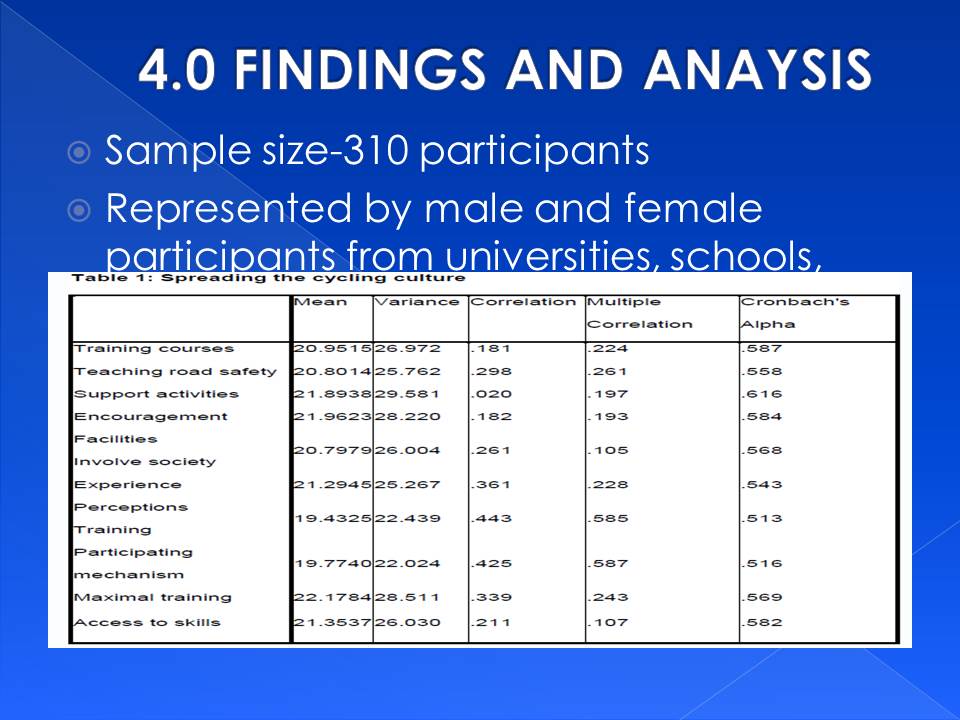
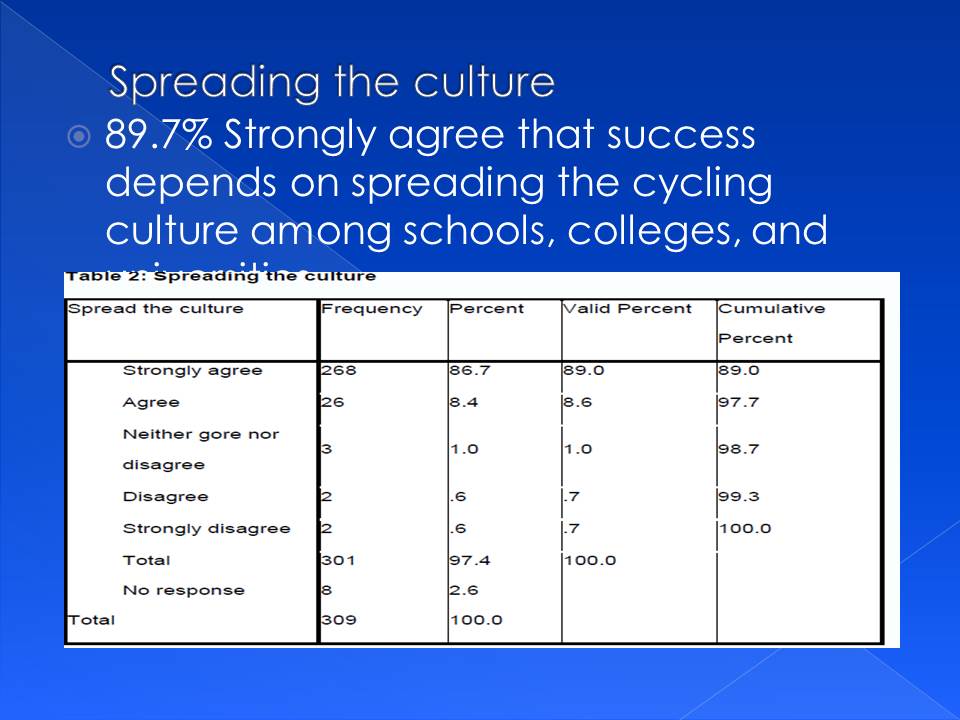

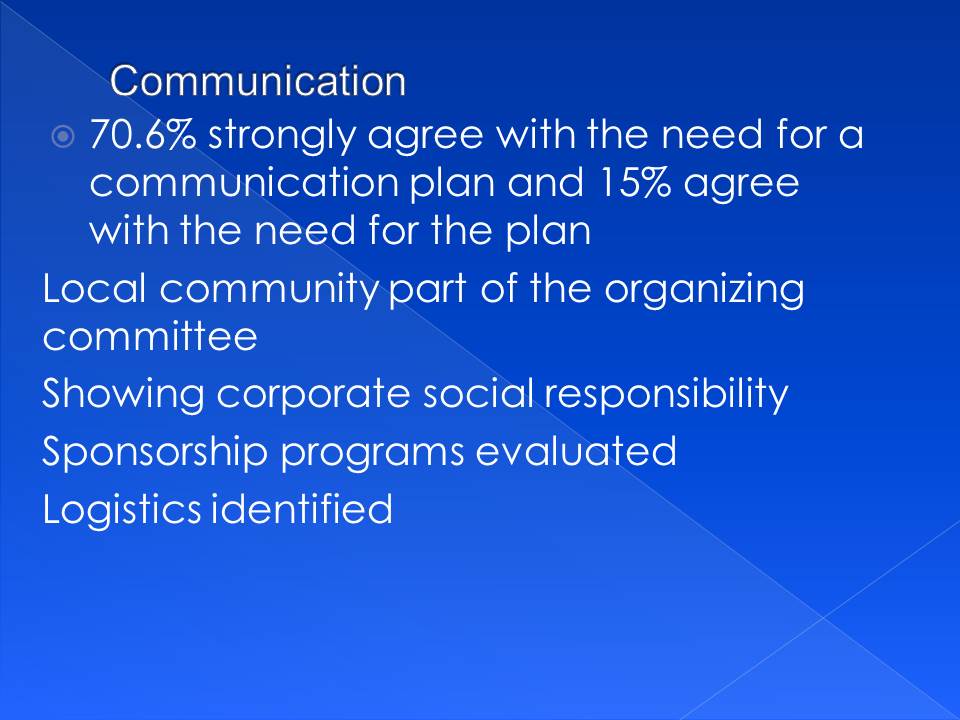
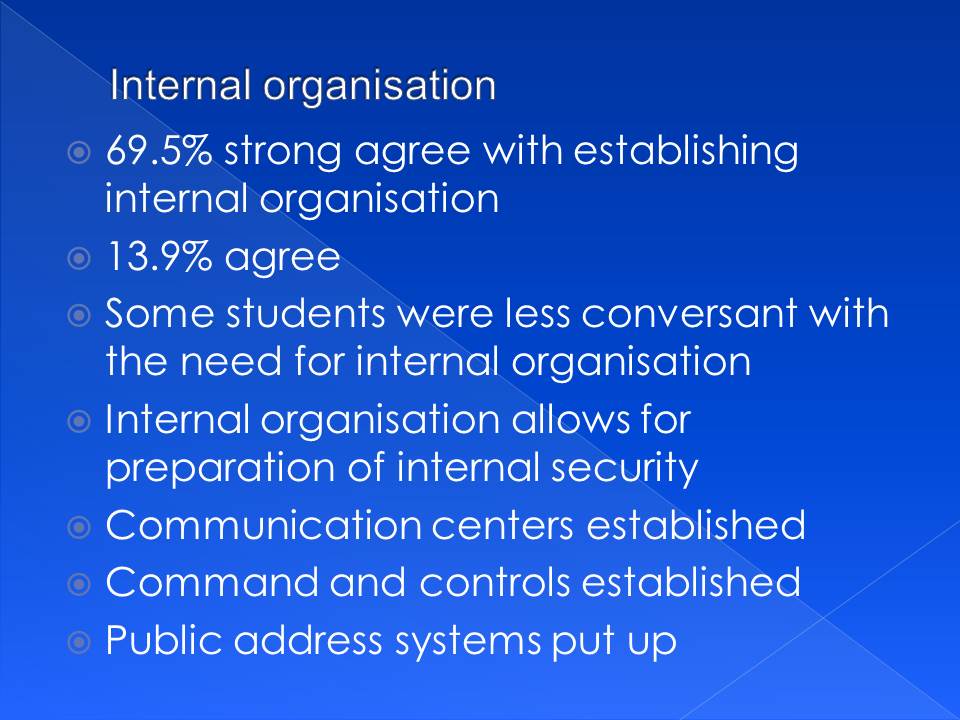
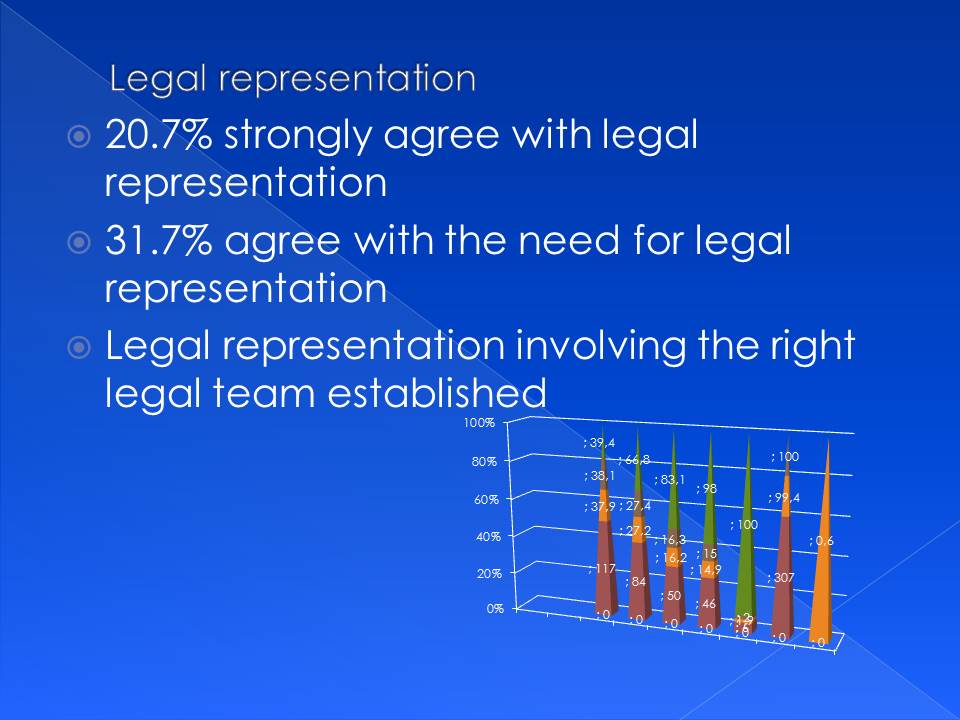
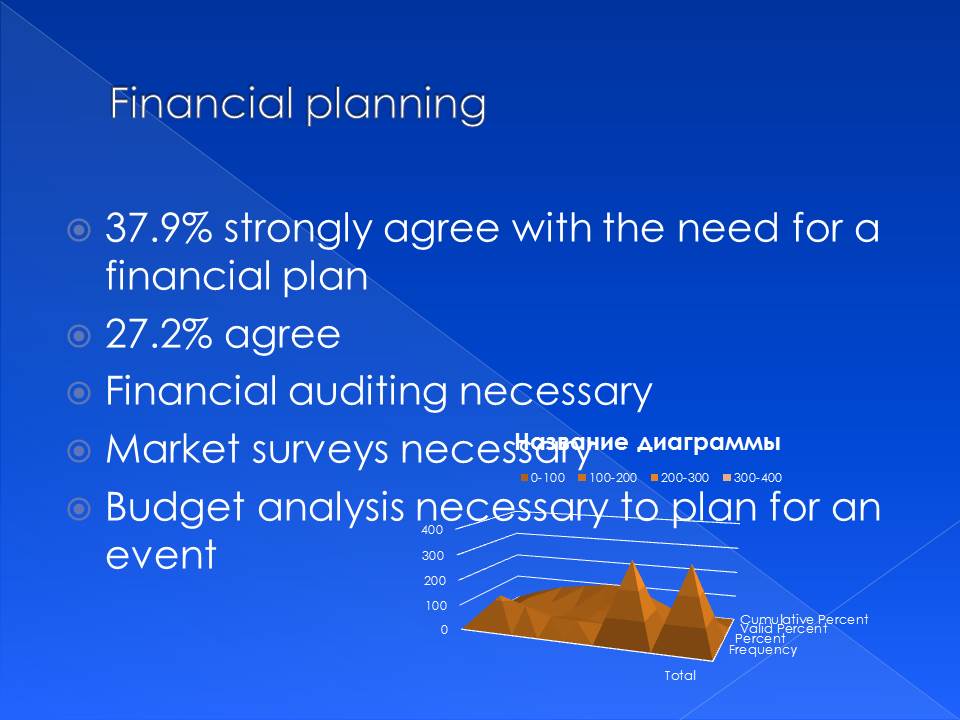
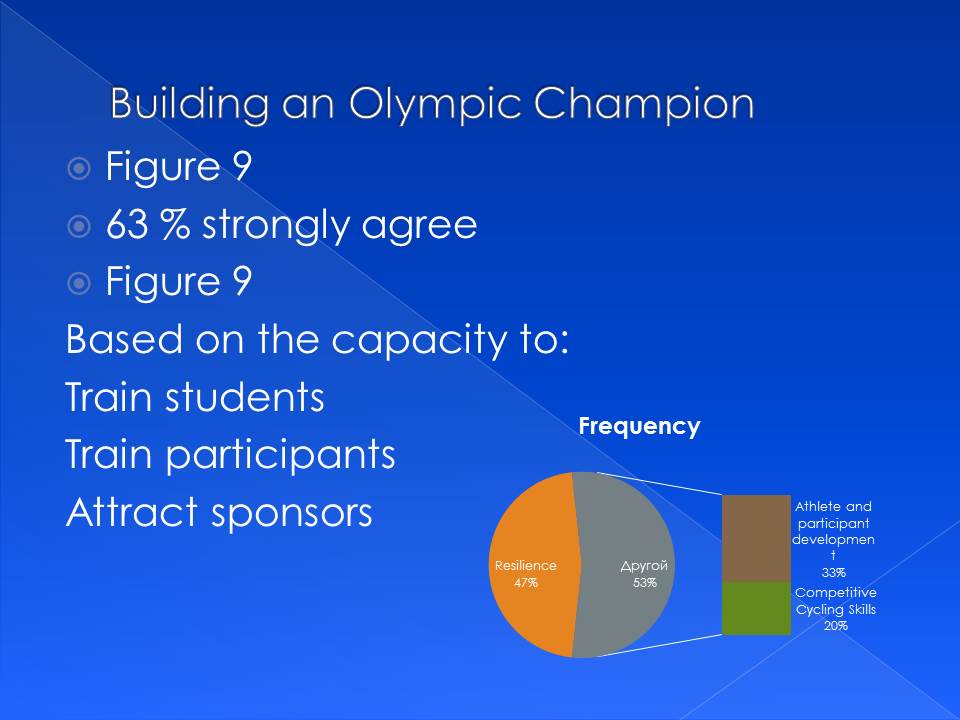
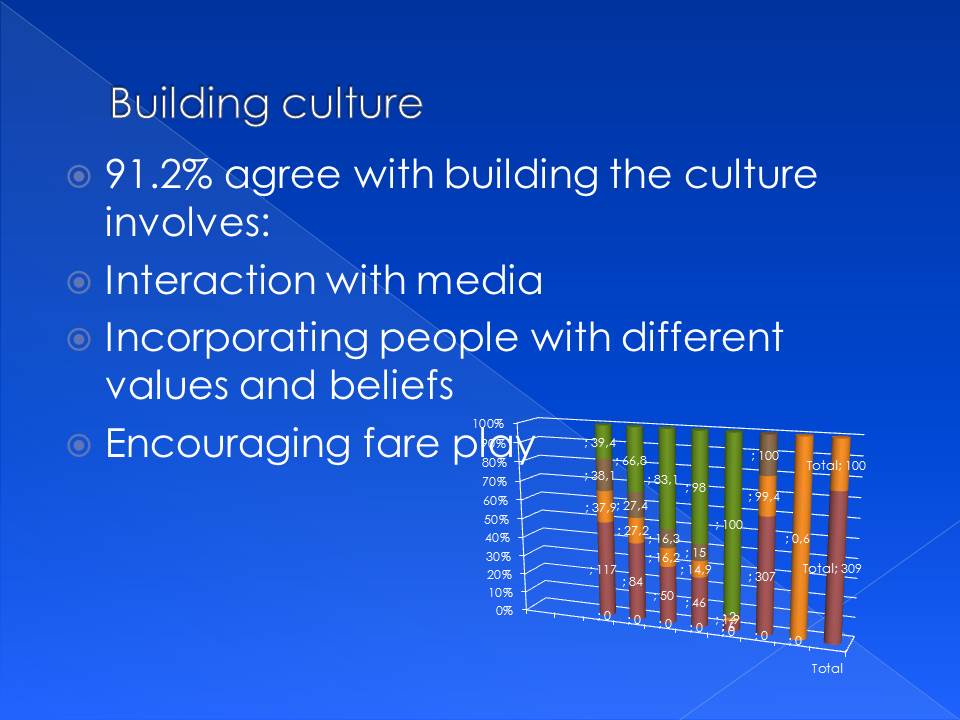
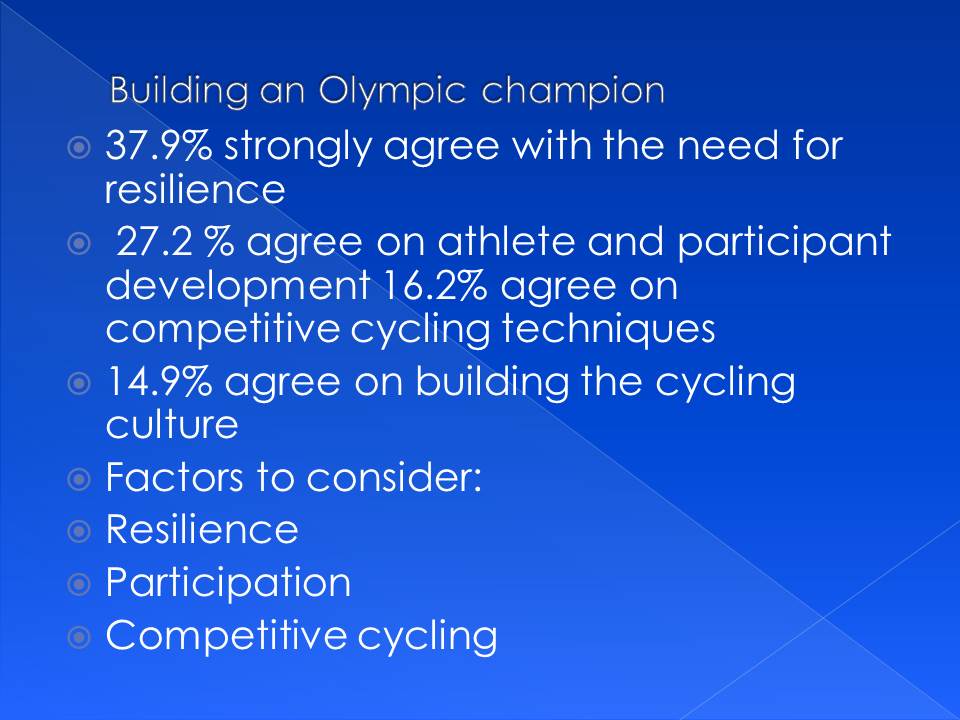
Discussion and Conclusion
Building the cycling culture in the UAE requires:
- People commitment;
- Resource commitment;
- Societal involvement;
- Program development.
- Effective internal organisation (69/6%);
- Legal representation (51.7%);
- Support for the planning component (81%);
- Communication plan (68.3%);
- Financial planning (63.4%);
- Preparation of program managers;
- Identification of sponsors;
- Teaching road safety;
- Offering support activities;
- Enabling access to skills;
- Use of different means to spread the cycling culture (86%);
- Use a clear communication plan;
- Setting the right communication plan;
- Solving team conflicts amicably;
- Building the Olympic champion (65.1%).
Apply:
- Athlete participation (27.2%);
- Competitive cycling skills (16.2%);
- Develop a cycling culture (14.9%).
The core elements to implement to build an Olympic champion include:
- Lactate threshold;
- Cycling economy;
- Maximal oxygen consumption;
- Endurance development;
- Use strength training techniques.
Combine endurance with the strength training techniques.
The goal is for trainers to achieve 37% of maximal aerobic power.
In conclusion, it is important to develop the cycling culture among students and the community to develop a cycling champion.
The Champion
- An event celebrating a successful champion.

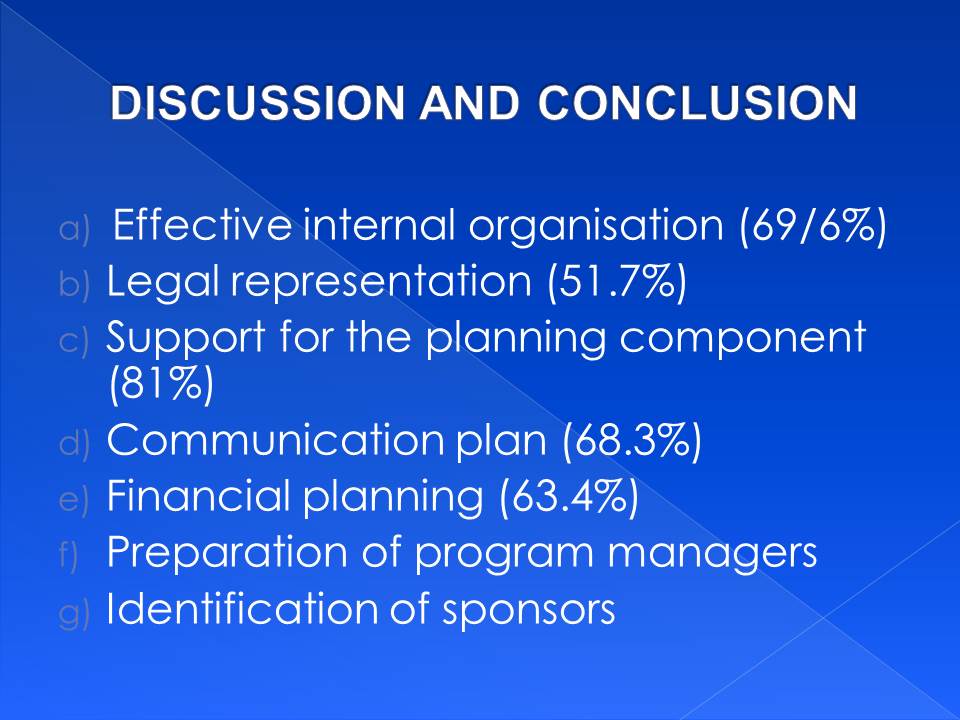
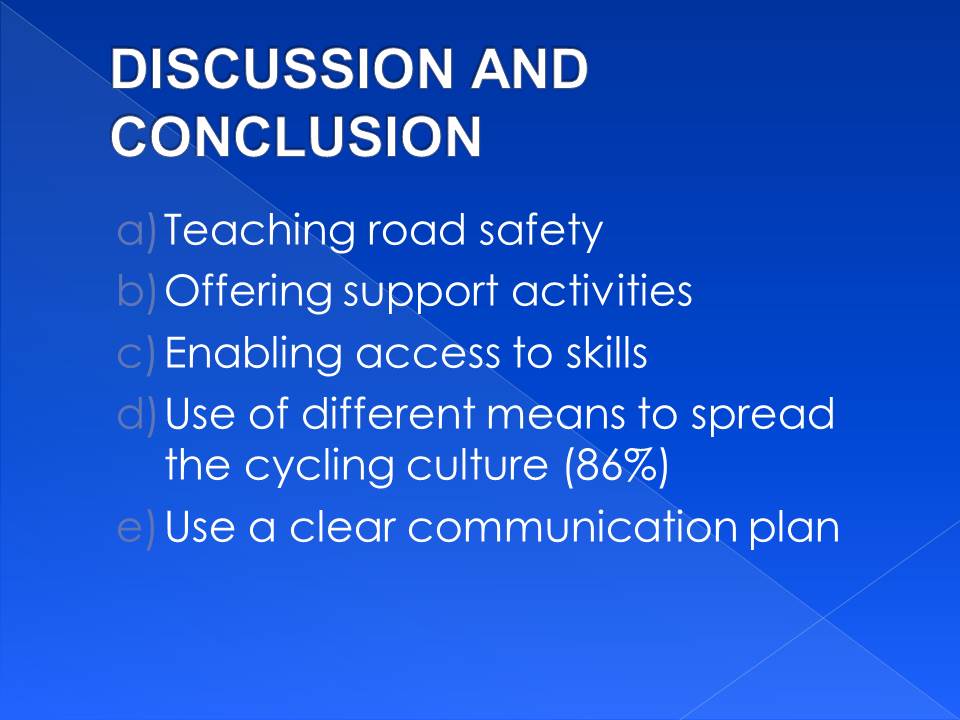
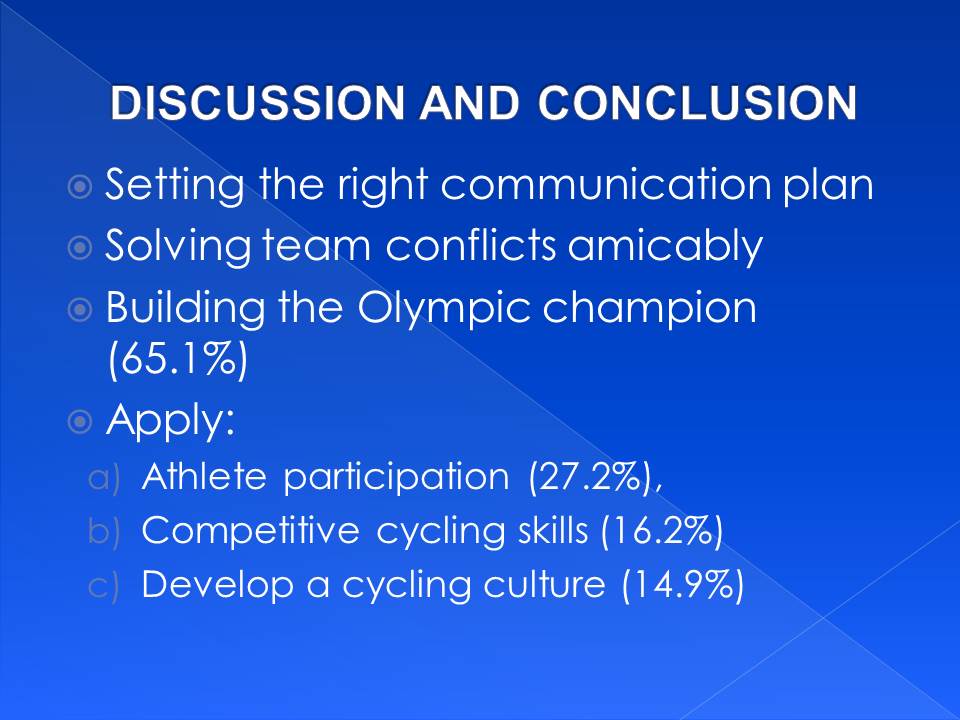
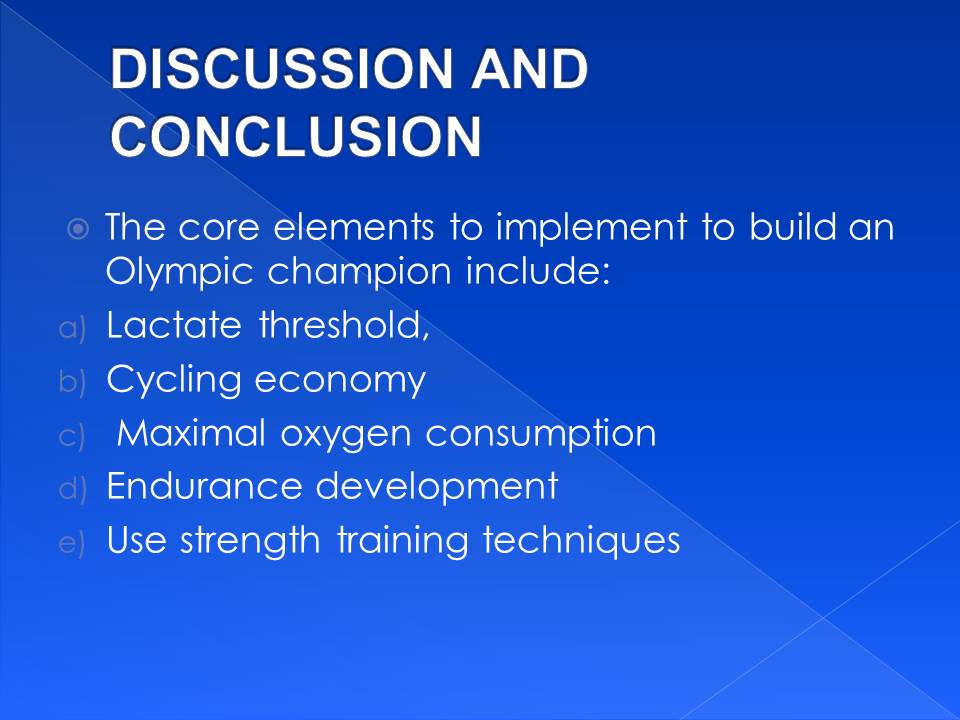
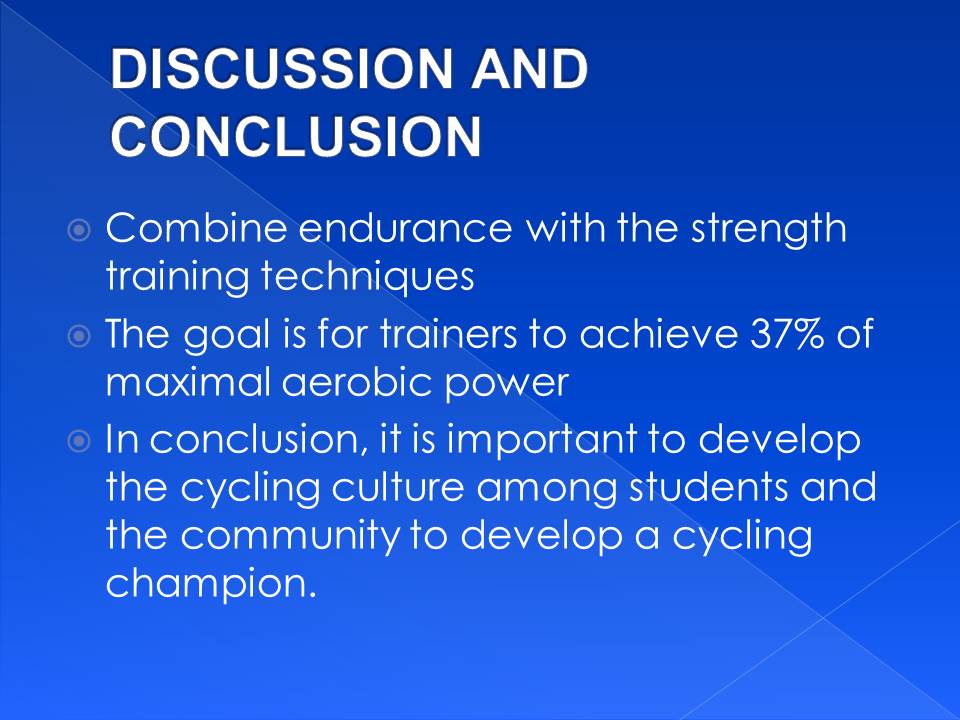
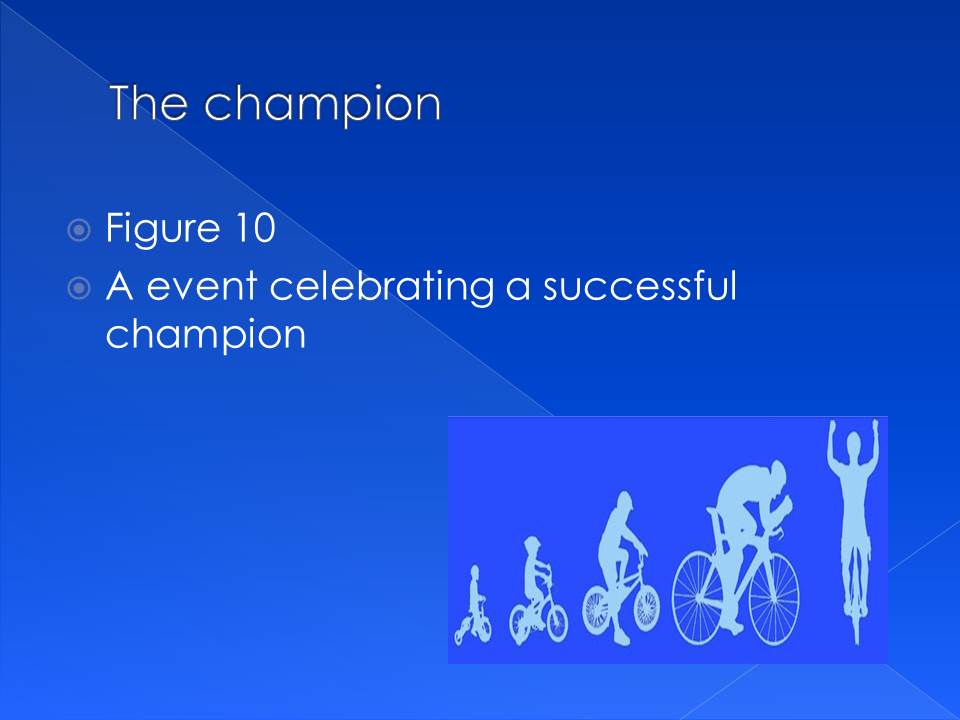
References
Alsharekh, A., & Springborg, R. (Eds.). (2012). Popular culture and political identity in the Arab Gulf states (Vol. 6). New York: Saqi.
Aldred, R. (2010). ‘On the outside’: constructing cycling citizenship. Social & Cultural Geography, 11(1), 35-52.
Aldred, R., & Jungnickel, K. (2014). Why culture matters for transport policy: the case of cycling in the UK. Journal of Transport Geography, 34(1), 78-87.
Alrawadieh, Z., & Johnson, D. (2012). Building Sports Tourism and Event Portfolios–Key Success Factors in Middle East Sports Tourism: A Case
Study. London. Journal of Tourism, Sport and Creative Industries, 6(7), 30-41.
Amara, M. (2010). Sport and development in the Arab World–between tradition and modernity. Routledge Handbook of Sports Development, 114.
Amaize, O., Mady, T., & Benson, E. (2011). The Need for Academic Programs in Tourism, Arts & Culture, Sports, and Healthcare Management in the UAE. World Journal of Management, 3(1), 96-108.
Attride-Stirling, J. (2001). Thematic networks: an analytic tool for qualitative research. Qualitative research, 1(3), 385-405.